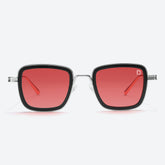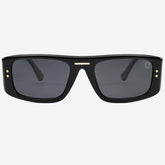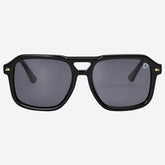What Strength Readers Do I Need?
Choosing the right strength of reading glasses, or "readers," is essential for comfortable and clear vision when reading or doing close-up work. Determining the appropriate magnification power can be confusing, but avoiding eye strain and ensuring optimal vision is crucial. Factors such as age, current vision condition, and the distance at which you read all play a role in selecting the perfect pair of readers. In this article, we’ll discuss these in-depth and help you determine the ideal strength of reading glasses.
Why do I need reading glasses?

The major reason people need reading glasses is usually presbyopia. Presbyopia is an age-related eye condition that makes people lose the ability to see things clearly when they’re up close. It’s a normal effect of aging, and it happens to almost everyone. It happens because as you age, your eye lenses lose their ability to flex so that close images can be brought into focus. This condition usually starts when you clock 40 and continues until your 60s. So, you may need reading glasses since reading requires bringing close objects and texts into focus.
Do Reading Glasses Magnify?
Contrary to popular misconceptions, reading glasses do not magnify small prints found in a book. The easiest way to explain without going into boring science stuff is to say that they make small print easier to read. They do so by helping the light reflected from print pass through your eyes and focus on your retina. So, rather than enlarge the print compared to their actual sizes, it just helps the image focus or “crystalize” on your retina. The strength of reading glasses is measured in “diopters.” We will discuss more of these in this article.
How to Understand Reading Glasses' Strength
The measuring unit for the strength of reading glasses is called a diopter. It’s also the standard unit for vision prescription lenses. It tells the refractive capacity of a lens. So, a lens with a high diopter number (the unit of measurement of readers’ strength) will have a more powerful prescription.
Reading glasses generally have a “+” preceding the diopter number and can normally range from +0.25 to +2.50 diopters or more. The range between these numbers is vast, but most people will find a prescription within this range.
What are the highest and lowest-strength reading glasses available?

The lowest strength for reading glasses is +0.25 diopters, while the highest is +4.00 diopters. The range commonly available is between +0.25 to +2.75 diopters. That’s the range we also provide for Dollger Eyeglasses. If you need reading glasses with a stronger prescription than that, you may have to make a custom order. Most stores, online or physical, do not make such lenses except as custom orders. You should also know that reading glasses are not a suitable prescription for someone with nearsightedness. If you have such a condition, visit your doctor for an appropriate prescription.
What’s the average strength of reading glasses?
Reading glasses have no average strength because people require varying prescription degrees. However, most people with presbyopia use reading glasses within the range of +0.75 to +2.50 diopters. Also, you should know that you will need reading glasses with progressively stronger prescriptions as you age.
How To Choose Reading Glasses
The best way to answer the question, “What strength readers do I need?” is to visit an optometrist. They will examine your eyes, diagnose your condition accurately, and prescribe the exact reading glass strength you need. Most over-the-counter reading eyeglasses require a lot of guesswork to find the right lenses, and those may not even be an accurate prescription.
You can easily order a higher-quality reader online with an optometrist's prescription. Our collection of Dollger Eyeglasses even allows you to choose the frame you desire for your prescription lenses.
Also, examining your eyes first allows you to determine if each eye requires lenses of different magnifications. For instance, one eye may have astigmatism while the other doesn’t. Then, there’s also the issue of most over-the-counter drugstores usually have eyeglass collections that increase by 0.50 diopters. Such increments are not precise enough, and you may end up with reading glasses that are slightly more powerful or less powerful. At Dollger, we have collections that increase by 0.25 diopters.
How To Use The Reading Glasses Eye Chart
Here’s a step-by-step way to examine your eyes and give you an idea of what strength of reader you need.
- Download and print a reading glasses strength chart.
- Hang the chart on a wall and stand about fourteen inches away while facing the chart.
- Cover one eye and read the chart's content from top to bottom without wearing corrective lenses. The chart begins with the smallest text, so you may need to go down several rows before you find a line you can read perfectly well. Note the line from which you were able to start reading. Repeat this step with the other eye.
- The strength of the glasses you need will likely correlate with the row number that you can read clearly. If the rows you could read vary for each eye, then you will need reading glasses with different magnifying powers.
- You still need to consult an optometrist to confirm your eye assessment and prescribe a perfect lens magnification for you.
Other Ways To Know Your Reading Glasses Strength
We have emphasized so far that the best way to determine the strength of your reader is to visit your optometrist and for good reason. This is the only way to ensure accurate assessment and prescription. However, other methods can give you an idea of what to expect. Remember, they won’t diagnose you accurately, so you shouldn’t rely on them alone.
Reading Glasses Strength by Age
We have discussed how your sight gets poorer as you age, meaning you will need an even stronger prescription progressively. With this general trend, optometrists have made some generalized ranges of the strength of reading eyeglasses, which are expected for different age ranges. Note that your prescription may not fall within these ranges.
- Ages 40–49: +0.75 to +1.50 diopters
- Ages 50–59: +1.50 to +2.25 diopters
- Ages 61 and up: +2.25 to +2.75 diopters
Your first pair of readers will generally be the ones with the lowest strength in your lifetime. We have an array of trendy Dollger Eyeglasses to help both you and your eyes stay sharp (see what we did there? Lol). You’ll know it’s time to increase the strength of your reading glasses when you notice you have difficulty reading with the current reading glasses.
Determining Glasses' Strength Using Trial and Error Method
If you decide to buy reading glasses from over-the-counter stores, you can figure out which reading glasses are best for you by trying out multiple glasses first. Select several glasses with different strengths and try reading from a book with printed texts. Choose the one that allows you to read without any form of discomfort. If you discover two sets of glasses that work well with your eyes but have different strengths, opt for the pair with lower strength. It’s better for your eyes if you have eyeglasses that are weak than to have glasses that are too strong.
What If Your Reading Glasses Aren’t Working Like They Should?
You may have been enjoying how your reading glasses have made it easy for you to read again, but after a while, you will notice the difficulty in reading returns despite the glasses. That’s your cue to upgrade to readers with stronger lens power. This happens because as you age, your eyes require stronger lenses. Another symptom is when you notice yourself holding the book further away from your eyes every time you read, despite having your glasses on.
However, if you notice yourself reading with the book too close to your face, you need to get weaker readers. Above all, you should still see a doctor for a more accurate diagnosis and prescription.
Find Your Perfect Reading Companion

Discover Dollger eyeglasses, where style meets clarity effortlessly. Choosing your perfect frame is a breeze: browse their collection to find one that suits your taste and personality. Once you've picked your frame, simply submit your prescription details. Dollger then customizes your glasses by adding precise prescription lenses to your chosen frame. Dollger ensures you get both fashion and functionality in one package, whether for reading or everyday wear. Experience clarity and comfort with Dollger eyeglasses, which are tailored just for you.
Final Note
Choosing the right reading glasses strength is important for clear vision and comfort. In summary, to find the right strength, start by testing with a diopter chart or trying on different pairs at a store. Your age and the distance at which you read can also guide you. Don’t forget that younger people generally need lower strengths, while older people may need higher ones. Finally, if you’re unsure, visiting an eye doctor is best. They can give you a precise prescription. The right glasses will make reading easier and more enjoyable, reducing eye strain and helping you see clearly.





